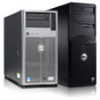Dell PowerEdge XL 5133-4 MXL 10/40GbE Switch IO Module FTOS Command Reference - Page 269
Recognize an Over-Temperature Condition, Message 1,
 |
View all Dell PowerEdge XL 5133-4 manuals
Add to My Manuals
Save this manual to your list of manuals |
Page 269 highlights
Recognize an Over-Temperature Condition An over-temperature condition occurs for one of two reasons: • The card genuinely is too hot. • A sensor has malfunctioned. Inspect cards adjacent to the one reporting condition to discover the cause. • If directly adjacent cards are not a normal temperature, suspect a genuine overheating condition. • If directly adjacent cards are a normal temperature, suspect a faulty sensor. When the system detects a genuine over-temperature condition, it powers off the card. To recognize this condition, look for the system messages in Message 1. Message 1 Over Temperature Condition System Messages CHMGR-2-MAJOR_TEMP: Major alarm: chassis temperature high (temperature reaches or exceeds threshold of [value]C) CHMGR-2-TEMP_SHUTDOWN_WARN: WARNING! temperature is [value]C; approaching shutdown threshold of [value]C To view the programmed alarm thresholds levels, including the shutdown value, use the show alarms threshold command (Figure 22-7). Figure 22-7. show alarms threshold Command Example FTOS#show alarms threshold -- Temperature Limits (deg C) -- BelowNormal Normal Elevated Critical Trip/Shutdown Unit0















